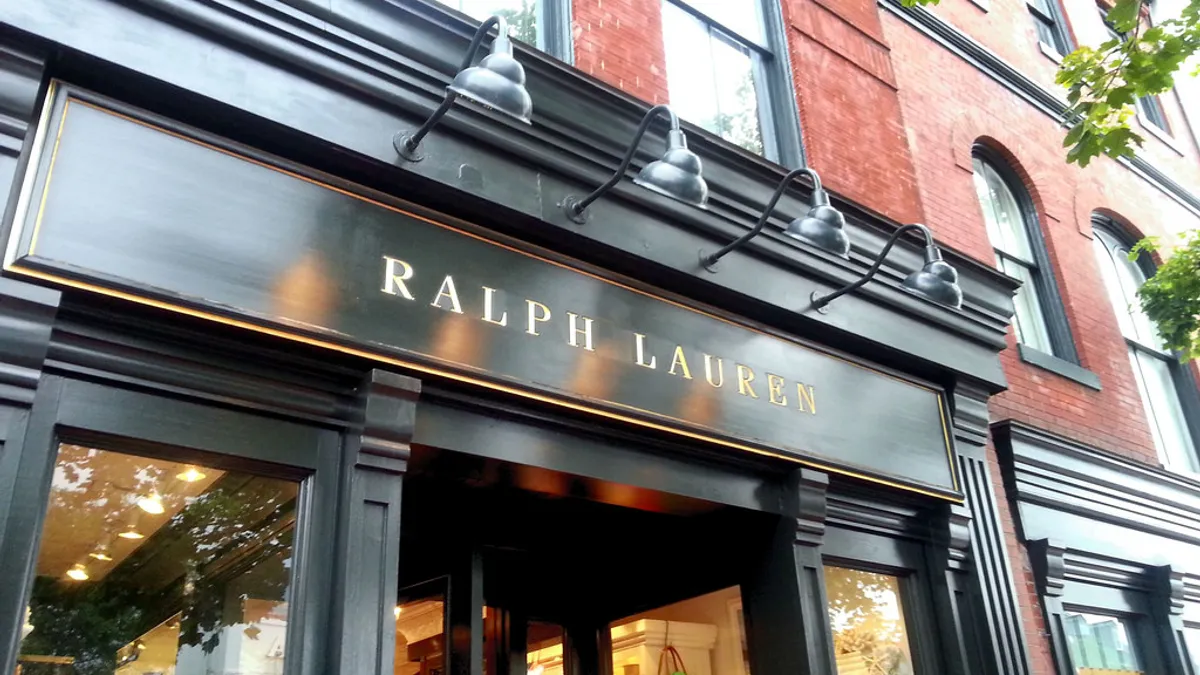Last week, Ralph Lauren shook up the retail industry with the announcement that he would be stepping down from the CEO post of the fashion empire he built. Even more surprising was his choice of successor — Stefan Larsson, president of Gap Inc.'s Old Navy brand.
It hasn't escaped the notice of several media outlets that Stefan Larsson is a Swedish man about to take the reins of what is often called a quintessentially American brand.
Yet, really, there's nothing more American than an immigrant making good here. And Larsson has already proven himself at another "very American" brand, Old Navy. But two questions remain for both retailers — where is Gap going without Larsson, and how does he fit with the Ralph Lauren brand?
Who is he?
Larsson not only grew up in Sweden, but also cut his retail teeth at Stockholm-based Hennes & Mauritz AB, known here for its H&M stores as well as other brands.
H&M is a fast-fashion leader, and Larsson spent 15 years there, eventually in key management roles. By the time he left for Old Navy nearly four years ago, H&M had grown from operating in 12 to 44 countries, with some 2,400 stores and $17 billion in sales.
And in these years under Larsson, Old Navy has prospered, outpacing its sister brands, higher priced Gap and Banana Republic. In 12 of the last 14 quarters, Old Navy has reported same-store sales growth, and in the past four years has accumulated $1 billion in annual sales over four years, a major turnabout.
Can Gap survive without Larsson?
If what Larsson brought to Old Navy — refined logistics that entail testing items and quickly reordering the successful ones — are what Banana Republic and Gap need, then, yes. In three years, the processes in place at the low-price brand could be replicated at the other brands.
That fast-moving, high-turnover approach may not be what works for Gap's higher-priced brands, however.
Specifically at Old Navy, the fact that EVP for global product Jill Stanton has been tapped to take over for Larsson (at least in the interim) bodes well for that brand, considering that she's also been there since 2012, working alongside him. That should calm fears, expressed by some, that the sales malaise of Gap's other brands could spread to Old Navy without him.
Still, the news shook investors. Gap Inc. shares sunk 6% at the news, while Ralph Lauren shares shot up 12% after having fallen 44% for the year.
"Old Navy has largely been viewed as the 'crown jewel' of Gap and any management transition will likely spur fears around a potential disruption in the business," Buckingham Research Group retail analyst Kelly Halsor wrote in a report Wednesday.
Larsson has also been credited with improving Old Navy's approach to style as well — though that may be more a credit to his "test and order more if successful" approach than any fashion savvy. Larsson has lamented his sense of being out of style as a more rural kid growing up, and that he understands the desire for uptown styles among young people outside of big cities.
But he's not a designer. Gap needs to find a design approach that has eluded it (and other apparel retailers) since its glory days of the eighties and nineties. Gap's embrace of so-called "normcore," for example, was a failure almost as soon as it began, possibly due to the recession, or the convoluted rules of the movement, or perhaps Gap's inability to get it right.
And the brand has had difficulty rectifying its mistakes. Gap's high-profile appointment of Rebekka Bay, brought on to help the retailer with its fashion mix, was short-lived when new Gap Inc. CEO Art Peck let her go earlier this year. The company had already begun its repairs to those mistakes this summer, tapping design and merchandising veterans Steve Sare, most recently at UNIQLO, and Alessandra Brunialti, who had been at Banana Republic from 1995 to 2011, and has also worked at alice + olivia, Calvin Klein, vince inc., and Nicole Miller in design and product development.
Does Larsson make sense for Ralph Lauren?
Ralph Lauren is not entirely abandoning his company. Though Larsson is CEO, he will report to Lauren, who is remaining as creative director and chairman and who characterized their relationship to the New York Times as a "partnership."
But if there's some doubt about whether Old Navy's fast-fashion-esque logistics make sense for Gap or Banana Republic, that's an even more pressing question for Ralph Lauren, which is a luxury company.
Some analysts have indeed questioned the choice, including Howard Davidowitz, chairman of Davidowitz & Associates Inc., a retail consulting and investment banking firm
"Ralph Lauren operates in a much more exclusive space," Davidowitz said, telling MarketWatch that even the T-shirts there are top quality. "Not saying he didn't do a wonderful job [at Old Navy]. How does this apply to Ralph Lauren?"
Even comments taking on "snobbishness" from Larsson himself in an extensive profile in the New York Times earlier this year make the choice seem odd for a retailer whose logo is an embroidered polo player.
"Times are changing, and prestige is being looked at differently," he told the Times in a story published in May."Sometimes when I shop at high-end brands, I get this look when I walk in, like people working there are screening me and asking: ‘Are you good enough to be our customer?' I hate it. And Old Navy is as an antidote to that."





















